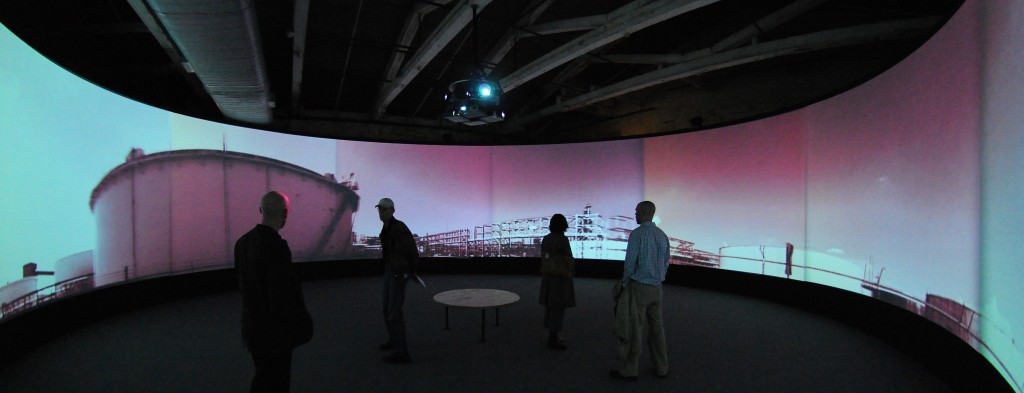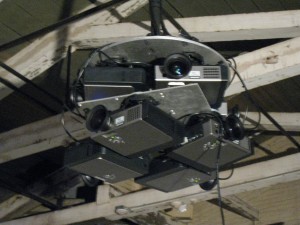For the past 8 months, I’ve been working with artist Pawel Wojtasik on a project called “Below Sea Level”, a panoramic video cyclorama art piece about New Orleans. It opened this past weekend at Mass MoCA, and I highly encourage you to visit!

Below Sea Level at Mass MoCA
I was particularly pleased that we managed to pull off this project for fraction of the budget that is usual. For 8 channel, high resolution, edge-blended cycloramas in a theater this size, a budget of $250,000 is typical.
Mass MoCA did it for a fraction of that price, without actually purchasing any commercial panoramic video solutions. The brilliant tech staff at the museum, led by Dante Birch, designed and built the projector platform below:

Projector array
I helped edit the footage generated by the Ladybug panoramic camera, as well as many other video sources, and wrote software to manage the distortion correction (for the curved screens) and playback from a single computer. I used the Max/MSP software environment for this. A key cost saving measure was to actually render distortion correction and edge blending into the footage, which saved having to do it in real-time on playback, and greatly simplified the projection system.
The soundtrack was composed and mixed 5.1 surround by Stephen Vitiello, and is played back on the same computer that handles the video playback.
I’ve written more about “Below Sea Level” on my website here, and also a couple of “making of” articles about the projection system and the panoramic video camera.
Check it out!